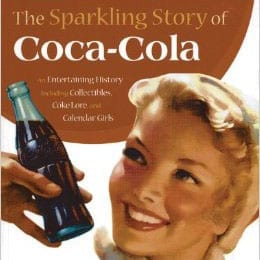Every brand has a story–every brand, service, cause or idea was started because somebody, somewhere had a flame coming out of their you-know-whats that inspired them to do the work, to get up early and stay late and push through to turn an idea into a reality. Every brand was created with an idea of what it would do for someone else–otherwise what’s the point? The story waiting to be told is the intersection of the passion of the creator with intention of the goal. How it is heard is a different, so to speak, story.
Every brand is telling its story across multiple platforms–a transmedia story whether they mean to or not. It is how we learn about brands–from TV, print, web, mobile, friends, POP, store coupons and our own experience with them. “Transmedia,” from a psychologist’s perspective, is how we learn about everything–assembling the pieces of what we know from various sources into a whole understanding.
But is that reality of multiple platforms of information gathering (life) really “Transmedia”(1)? The prevalence of technologies and the amount of people actively trying to tell stories rather than just sell stuff is good. Creating a transmedia strategy for your storytelling is, as the Transmedia practitioners will tell you, a lot of thought and work beyond crafting a clever story.
Transmedia storytelling for brands (using that term broadly as any core idea or social promise) is the coherent and consistent telling of the brand story across multiple platforms. That brand story is already being told willy-nilly if you’re not helping. Transmedia storytelling is the intentional strategy; it is a 360-degree view of communication that includes the participation and interaction of the audience. It starts with the development of the core brand values as story—I like to think of it aligned with an archetype as a “North Star” for content decisions. The brand story is then developed into a larger storyworld—even non-entertainment franchises exist in a larger context of meaning that has to be thought through and articulated. Transmedia storytelling also recognizes that the audience is already making up part of your story anyway and invites them in as part of the official process. This not only turns the audience into stakeholders, but lets the brand hear what matters to their constituents through their words and their behavior. Harley Davidson, Coke and Nike have learned a lot, as Yogi Berra would say, by just watching.
A transmedia strategy integrates audience feedback as part of the overall plan and in the context of the core brand story—feedback isn’t just used to trash one commercial message that doesn’t work and think up another. The company’s values must be authentically and transparently reflected in the brand story and must be consistent across all the stories a brand tells. Stories can be told in different ways without violating the fundamental brand purpose as we learned from Shakespeare. Successful brands are able to show who they are through the way they tell stories and engage their audience. A good brand storyteller knows how to tell the story so that it’s true to the brand while creating an entry point for the consumer. A Transmedia strategy takes a core story and extends it, proactively inviting participation and creating links among the story experiences to extend engagement and increase loyalty and commitment.
 Every brand has a story, has stories it tells and has stories that are told about it. This is true for products, services, causes and candidates. A Transmedia strategy is the opportunity to identify the defining principles, think through the consistency of the storyworld and help guide its direction.
Every brand has a story, has stories it tells and has stories that are told about it. This is true for products, services, causes and candidates. A Transmedia strategy is the opportunity to identify the defining principles, think through the consistency of the storyworld and help guide its direction.
(1) The term ‘transmedia’ has been widely debated, embraced and eschewed. I use it here to mean a coherently developed story-based communication strategy with a core story that is told additively across different media platforms, either in pieces like a puzzle or with an anchor medium and expanded through back stories and places for exploration. While some transmedia stories have beautifully and carefully articulated story bibles, other storyworlds are created within the consumer’s head within the parameters and boundaries of reality offered by the brand stories. See http://www.tstoryteller.com/transmedia-storytelling for a good definition and examples.
Previously published on LinkedIn.com/in/pamelarutledge


 Dr. Pamela Rutledge is available to reporters for comments on the psychological and social impact of media and technology on individuals, society, organizations and brands.
Dr. Pamela Rutledge is available to reporters for comments on the psychological and social impact of media and technology on individuals, society, organizations and brands.
What Makes A Brand Story “Transmedia”? http://t.co/nttfCULHK4
A part of your story? Your audience!
“A #transmedia strategy integrates audience feedback”
http://t.co/CuTxpPN01D
#storytelling
RT @materaclaudia: Every #brand is a #story but what makes it #transmedia? #storytelling #marketing #business #socialmedia #PR #web http://…
Every Brand Is A Story but Does That Make It ‘Transmedia’? via @D_RockingChair http://t.co/kwES1hICaj
What Makes A Brand Story “#Transmedia”? http://t.co/UeLog9hQTN
RT @DoremyDom: What Makes A Brand Story “#Transmedia”? http://t.co/UeLog9hQTN
RT @DoremyDom: What Makes A Brand Story “#Transmedia”? http://t.co/UeLog9hQTN
RT @DoremyDom: What Makes A Brand Story “#Transmedia”? http://t.co/UeLog9hQTN